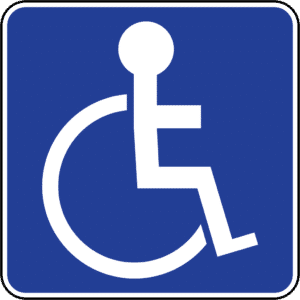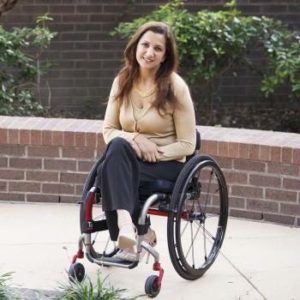Let’s talk about safe driving and spinal cord injuries. As a spinal cord injured driver of a modified minivan, I keep stickers on the side and back of my car to signify my disability. One would think that all drivers on the road would heed these indicators. However, it has been my experience that more cars will cut me off or overtake me or just drive recklessly around me.
 Of course, I get irritated. After all, if they hit my van, it would take much longer to get repaired or even replaced compared to an unmodified vehicle. I get even more irritated when my children are in the car with me. I have to be so much more careful, and I just cannot trust other drivers on the road.
Of course, I get irritated. After all, if they hit my van, it would take much longer to get repaired or even replaced compared to an unmodified vehicle. I get even more irritated when my children are in the car with me. I have to be so much more careful, and I just cannot trust other drivers on the road.
Many times, I end up taking alternate routes to avoid highways and high traffic areas. It might take a bit longer to get where I’m going, but it’s worth it to me. No child or adult should have to be endangered by someone else’s reckless driving.
I can’t help but wonder why people don’t understand that speeding and driving aggressively not only puts others in danger but also themselves.
The Importance of Safe Driving After Spinal Cord Injury Cord Injuries
I always cringe when I see a car driving fast and weaving through traffic like they’re NASCAR competitors. I also say a prayer for them and the drivers around them, because I don’t want anyone to get hurt.

According to the National Spinal Cord Injury Statistical Center, it is estimated that, out of the current population of 314 million people in the United States, the annual incidence of spinal cord injury is approximately 54 cases per million.
In addition, automobile accidents are the top cause of spinal cord injuries. That accounts for over 38% of all spinal cord injury cases since 2010.
Why don’t we ever hear mainstream media talk about these statistics? In all the years since I became a paraplegic, I can’t remember anything discussed in the news about safe driving or how to prevent spinal cord injuries. I can’t help but wonder why.
If the media began to educate the public on these statistics and why they are so high, then perhaps people might begin to pay attention to being more careful on the roads. Maybe they would become more considerate of others on the roads too. I think it would at least help people understands the severity of certain consequences of reckless driving.
It doesn’t take someone under the influence of drugs or alcohol to cause a car accident. Sometimes, all it takes is someone in a hurry or someone who isn’t paying attention.
Safety Must Come First
We could do so much more to help educate people who are not disabled. In fact, I believe it’s imperative. We could start first by educating young drivers and teenagers.

I visit many schools every year to read excerpts from my published books. Also, I take time to talk about what it’s like to live with a disability. By the time I leave, the kids at the school have a good understanding of inclusion and safety.
As much as we want laws to change and people to understand, we also have to be sure they know why this is so important. I have met some advocates, but only a few that have the courage to face policymakers head-on. So, shouldn’t we also be doing this in the media? Shouldn’t we be demanding more broadcasting of preventing injuries caused by a car accident, and how we can do that?
One of these days I hope that I can drive down the road and not feel like I have to hold my breath when another driver ignores that my car is a modified minivan for a disabled person. Not only is it crazy to think they would think my van would somehow slow them down, but that they are missing a fundamental piece of information: the disabled sign.
All people in America need to understand that while some people are born with their disabilities, many others are disabled by a traumatic injury. No one is invincible, and such injuries can happen to them too.
Education, in my opinion, is the cornerstone of putting safety first, and education can start with open discussions and spreading awareness.